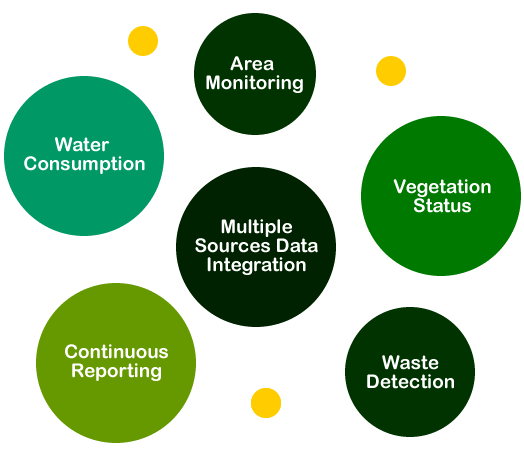Organic Farming Monitoring
Real-Time Monitoring with Remote AI
Organic Farming Monitoring
Remote AI enables real-time remote monitoring of organic farming processes, allowing stakeholders to instantly verify the status of their production crops.
Precision Crop Monitoring through High-Resolution Satellite Imagery
In the context of sustainable agriculture and the growing importance of organic production, precise crop monitoring has become a fundamental element for optimizing yield and sustainability. In this context, an innovative solution based on the use of high resolution satellite images is proposed. Our objective is to provide a complete, accurate and efficient monitoring tool that allows the validation of sustainable agricultural practices.

Crop phenology
Monitoring the stages of the life cycle and confirming their timing.

Anomaly detection
Analysis of vegetative indices over time may reveal noteworthy deviations or alterations.

Water
needs
Efficient water utilization minimizes waste and reduces the need for plant growth regulators.

Crop rotation
Stands as an effective method for preventing land degradation and upholding ecological equilibrium.
Case Study


01. Cotton Monitoring
Understanding cotton phenology is crucial for optimizing water usage and maximizing yield, especially in semi-arid regions. Phenological changes, like flowering and fruiting, directly affect water requirements and efficiency. This is vital for enhancing irrigation practices
Water Management Optimization
Studying cotton phenology helps identify critical growth stages, enabling more effective water management throughout the growing process.
Yield Maximization
Phenological understanding aids in optimizing cotton yield by implementing measures to promote better fruit formation.
Sustainable Irrigation Practices
Adapting irrigation practices based on cotton phenology is essential for promoting sustainable agriculture, ensuring efficient water distribution and minimizing waste during the plant's growth cycle.


02. Animal Husbandry
Assessing animal husbandry’s environmental impact is crucial for sustainability. Multispectral and hyperspectral remote sensing methods offer valuable insights into breeding environment dynamics, especially in the textile industry. Remote sensing is essential for monitoring land use, vegetation health, and other key environmental factors.
Environmental Assessment
Remote sensing enables detailed evaluations of animal husbandry's environmental impact, particularly in the textile sector
Landscape Monitoring
It plays a vital role in monitoring land use changes, vegetation health, and other environmental factors influenced by herding and breeding activities.
Mitigation Strategies
Remote sensing data helps formulate recommendations and implement effective mitigation actions to address environmental changes resulting from animal husbandry activities.
